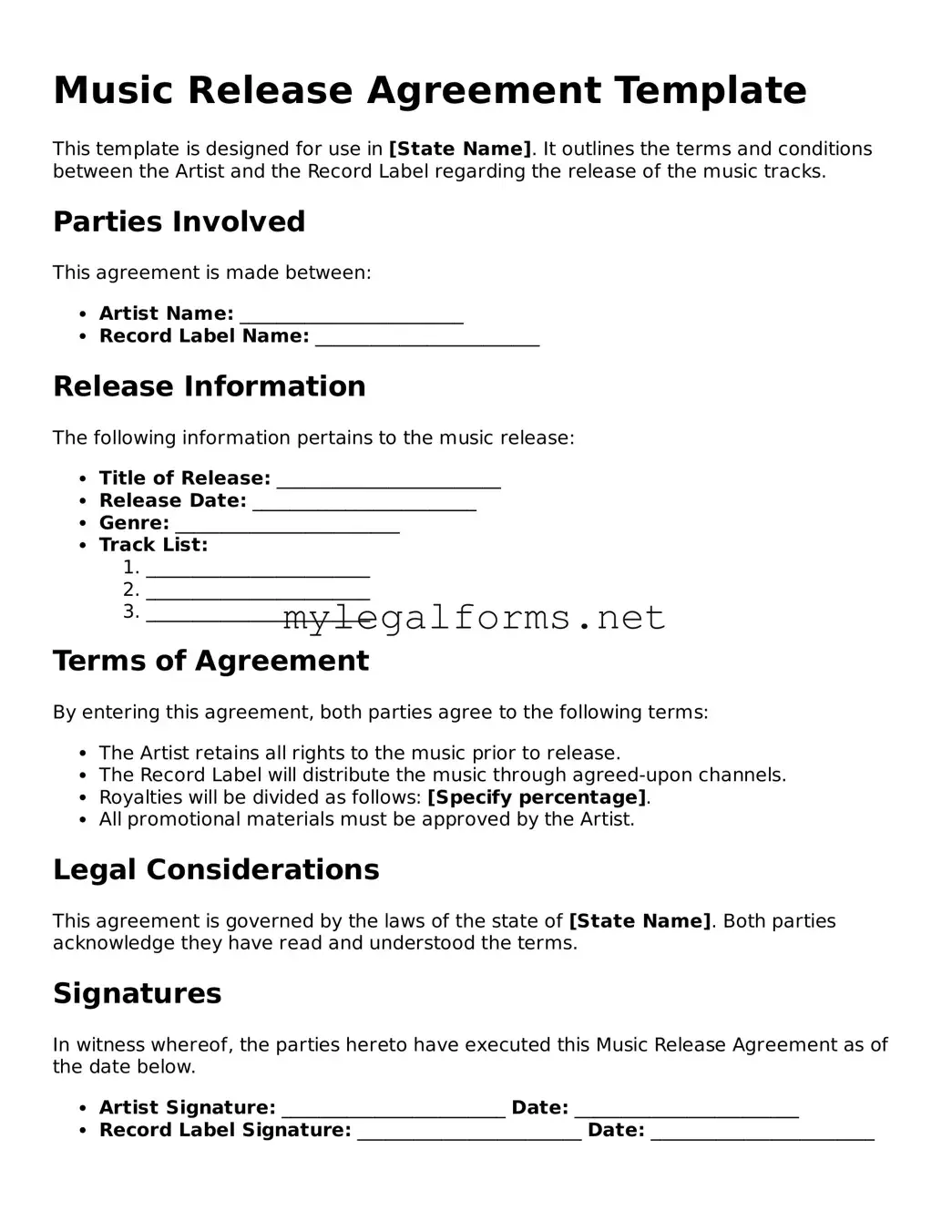Music Release Agreement Template
This template is designed for use in [State Name]. It outlines the terms and conditions between the Artist and the Record Label regarding the release of the music tracks.
Parties Involved
This agreement is made between:
- Artist Name: ________________________
- Record Label Name: ________________________
Release Information
The following information pertains to the music release:
- Title of Release: ________________________
- Release Date: ________________________
- Genre: ________________________
- Track List:
- ________________________
- ________________________
- ________________________
Terms of Agreement
By entering this agreement, both parties agree to the following terms:
- The Artist retains all rights to the music prior to release.
- The Record Label will distribute the music through agreed-upon channels.
- Royalties will be divided as follows: [Specify percentage].
- All promotional materials must be approved by the Artist.
Legal Considerations
This agreement is governed by the laws of the state of [State Name]. Both parties acknowledge they have read and understood the terms.
Signatures
In witness whereof, the parties hereto have executed this Music Release Agreement as of the date below.
- Artist Signature: ________________________ Date: ________________________
- Record Label Signature: ________________________ Date: ________________________
